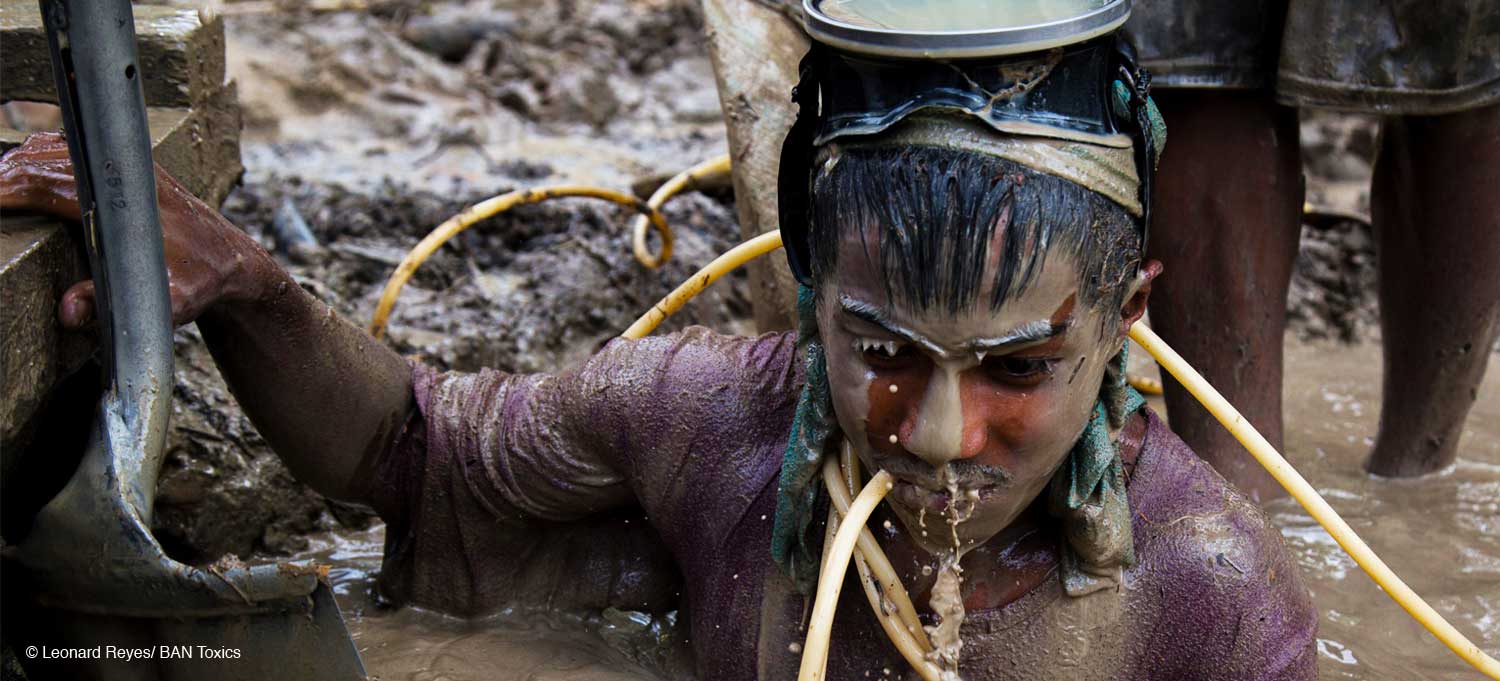
26 April 2017, Daet, Camarines Norte—Camarines Norte Province, together with environment group BAN Toxics and the International Labor Organization (ILO), today vowed to end child labor in small-scale mining. The commitment was announced during the launch of the provincial artisanal and small-scale mining (ASGM) Roadmap to improve social and environmental practices in the small-scale mining sector in Daet, the provincial capital.
The presentation of the ASGM Roadmap coincided with the Camarines Norte launch of the CARING Gold project, a three-year strategy to eliminate child labor in small-scale mine sites, for which the province is a pilot area. The project, funded by the US Department of Labor, is eyeing the formalization of the small-scale mining industry as a critical solution to prevent boys and girls from risking their health and lives working in dangerous, unregulated mines.
“Camarines Norte Province welcomes this initiative and is proud to be pioneering this project,” said Governor Edgardo Tallado. “Small-scale mining has brought food on the table for thousands of families here in the past centuries. It is time to formalize the sector’s role in provincial development and ensure the end to child labor and better labor and environmental practices for the benefit of all.”
“Small-scale mining is a sector plagued by serious labor, health and environmental challenges such as child labor and rampant use of toxic mercury,” said Eve Cubelo, Development Program Manager for BAN Toxics. “Camarines Norte has taken an important and laudable step to address these problems in its ASGM Roadmap toward responsible artisanal and small-scale gold mining. We urge the national government to adopt a similar roadmap throughout the country to completely eliminate child labor and mercury use in the sector, nationwide.”
The province’s ASGM roadmap is the first of its kind in the country to pull in different government agencies and other sectors to work on a responsive and comprehensive plan to uplift the lives of people in small-scale gold mining communities. The roadmap can be used as a model by other provinces in the Philippines and by other countries where small-scale mining and its attendant problems are rampant.
Miners, miner’s association representatives, barangay local government unit officials and civil society organizations from Jose Panganiban, Labo and Paracale participated in sessions facilitated by BAN Toxics to produce the roadmap, which they envision as the community development agenda for Camarines Norte. This roadmap reflects the real challenges that the ASGM sector faces, such as the lack of social services, difficulties in monitoring child labor and mercury use, and insufficient support for the formalization of the sector.
“The key to effectively and sustainably addressing the problem of child labor and poor working conditions in ASGM is to make their operations formal and legal,” said Giovanni Soledad, ILO project coordinator for CARING Gold. “The project, through the partnerships it will develop can support the sector to make this a reality.”
“Wag na natin ikalungkot ang mga paghihirap na pinagdaanan nating mga maliliit na magkakabod. Sa halip, gawin natin itong lakas at inspirasyon para tayo ay kumilos patungo sa pagiging isang legal na sektor na nagsusulong sa responsableng pagmimina. Sa CARING Gold at ang ASGM Roadmap, tahakin natin ang daan patungo sa pagiging pormal na sektor,” said Serafin Dasco, President of the Small-Scale Miners’ Association of Paracale.
Formalization should provide better regulatory mechanisms that will support improved working conditions, increase the access of workers and communities to social services and eliminate child labor in ASGM. The CARING Gold project is designed to support the setting-up of Minahang Bayan areas that are compliant with environmental, health, labor and social justice standards.
Present during the launch were representatives from partner government agencies including the Department of Labor and Employment (DOLE), Department of Social Welfare and Development (DSWD), Department of Environment and Natural Resources Mines and Geosciences Bureau (DENR-MGB) and the Department of Education (DepEd). Representatives from Camarines Norte local government, local miner’s associations of various municipalities, civil society organizations and ILO were also present.
BAN Toxics is an independent non-government environmental organization that works for the advancement of environmental justice, health and sustainable development in the area of chemicals and wastes, with a special focus on women, children and other marginalized sectors.
Photo release: Here is a link to the photos being distributed by BAN Toxics together with this press release: http://bit.ly/2oFOGcE
Notes to editors:
1. Child work in mining is considered one of the worst forms of child labor. In 2009 ILO estimated that around 18,000 Filipino children work in small-scale mining and quarrying. They carry heavy loads, work long hours and are frequently exposed to toxic chemicals such as mercury. Children’s bodies are still developing and such work conditions and toxic exposure negatively impact their physical and mental development.
2. In addition to the prevalence of child labor, labor conditions in the ASGM sector are also a problem. Workers usually have no access to protective equipment and do not have fair labor contracts, healthcare or social security.
3. While workers are mired in poverty, the sector remains a major economic contributor, providing as much as 80% of the Philippines’ annual gold production. It directly employs around half a million people and indirectly benefits two million people in remote rural communities. But the lack of formalization has prevented the equitable distribution of benefits from small-scale mining, with money going to foreign middlemen and illegal payoffs to corrupt authorities, instead of to legitimate payments that can augment local government income.
